The Green Line Through Central Nicosia
Jeep Gate to Ledra Street
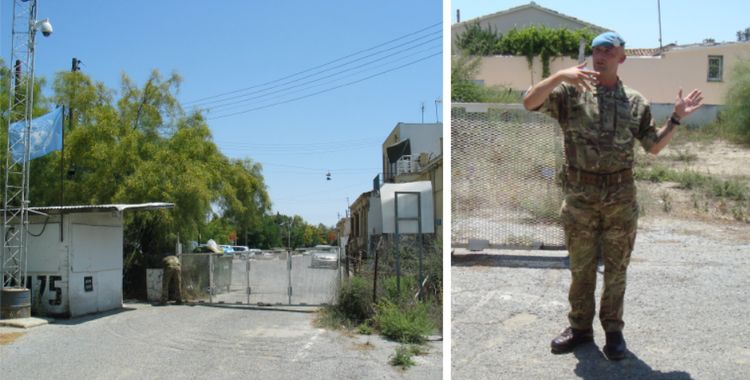
You enter the Buffer Zone at a point known as "Jeep Gate" where your escort gives you some initial information
Jeep Gate is named after a UN jeep which acted as a hastily placed Observation Point (OP) in response to problems on the border.
Later, following a violation of the Buffer Zone, the jeep was used by the protesters to transfer their injured to hospital.
The jeep however, was never seen again.
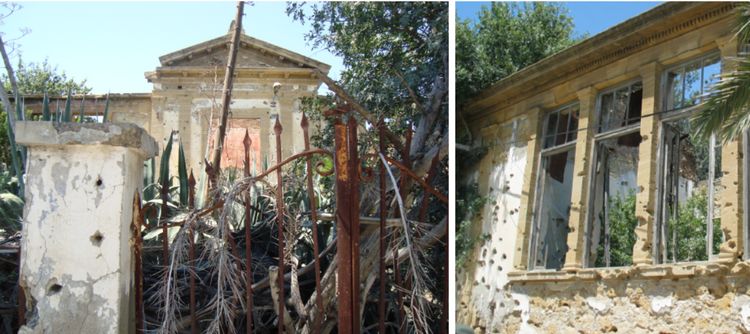
The ruins and potmarked walls of a secondary school soon give an indication to the level of fighting in the area
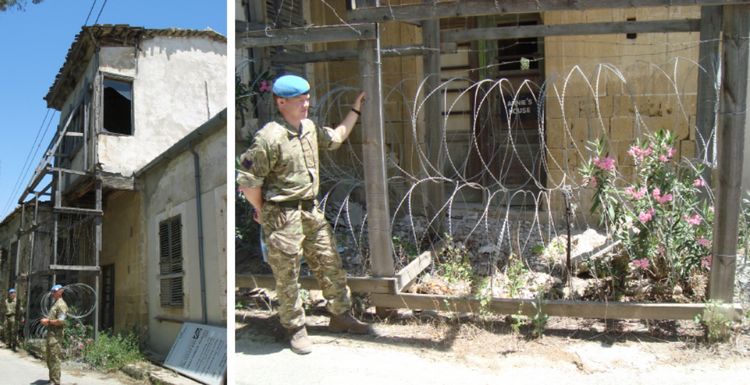
An early stop is to view Annie's House
Following the 1974 troubles, Annie refused to leave her home which sat inside the buffer zone and no amount of UN diplomacy could dislodge her.
She remained and UN patrols escorted her on shopping trips and kept an eye on her. When Canadian UN patrols failed to notice any movement in the house they entered and found she had died. Annie was 90 years old and UN soldiers arranged and paid for her funeral.
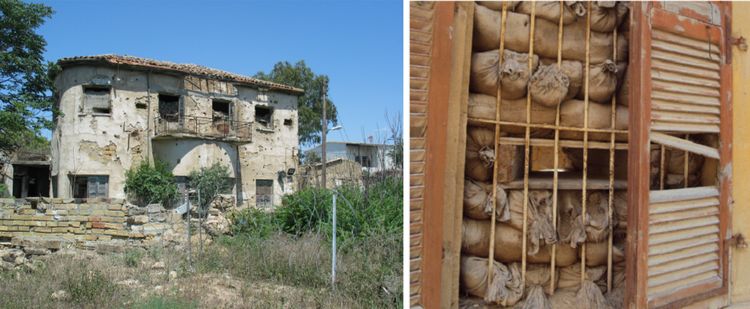
Buildings were converted into 'fortresses' with every window a firing position
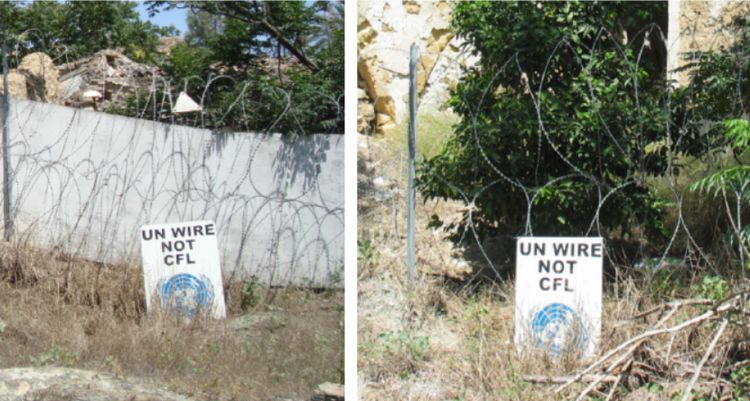
Signs indicating that the barbed wire belongs to the UN and is not indicating the Cease Fire Line (CFL)
The position of Turkish & Greek forces relative to the agreed CFL is of the utmost importance. The reason for any activity within the Buffer Zone has to be made clear to all parties.
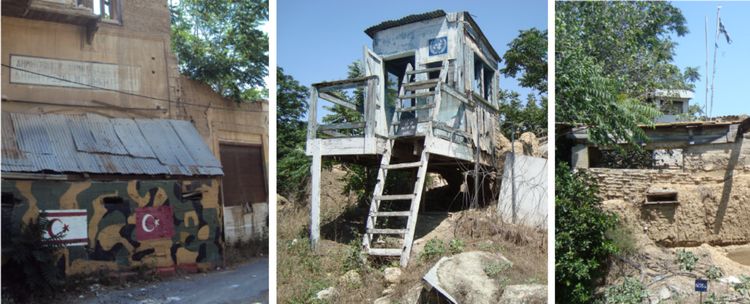
Many Turkish, UN and Greek positions along the line are no longer manned as part of the mutual reduction of forces
In 2004 the UN Security Council reduced the size of the force by one-third which forced UNFICYP to find an innovative technological solution to monitor some troubled areas. By 2008 it had replaced several manned observation posts with unmanned surveillance cameras. In so doing, it became the first UN peacekeeping operation to use 24-hour camera surveillance to monitor a conflict zone.
Full details of the use of cameras in Nicosia can be found by clicking this link (which opens in a new window)
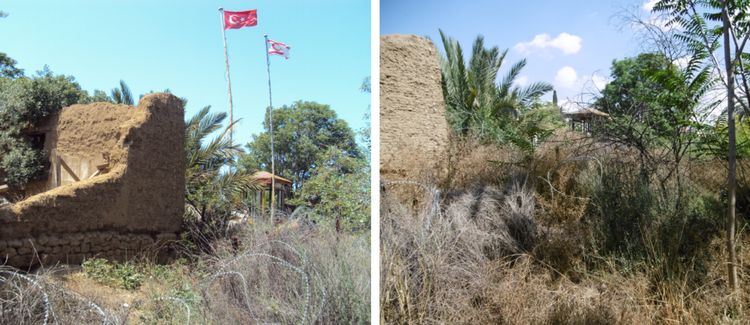
Even the removal of flags is considered a positive move to reduce tension. The first photograph was taken in 2014 and by 2015 the flags and poles had been removed
This location is where one of the most notorious "baiting" incidents took place. Look closely at the flag poles and you can see that they are bound with barbed wire. This was to prevent the repeat of anybody climbing the poles to steal the flags. Some years earlier, a Greek soldier noticed that the Turkish sentry opposite was asleep. He crossed the Buffer Zone, climbed the poles and stole the flags. To bait the Turkish soldier he would display the captured flags from the wall of his bunker. In order to add a final insult, he proceeded to drop his trousers and give the Turkish sentry a "moonie".
It is believed that in the Greek camp they created a reminder of this action that was called "The Monument to the Moon". However, the insult was not forgotten by the Turkish sentry who, biding his time, finally saw the offending Greek soldier maintaining his bunker and proceeded to shoot him dead.
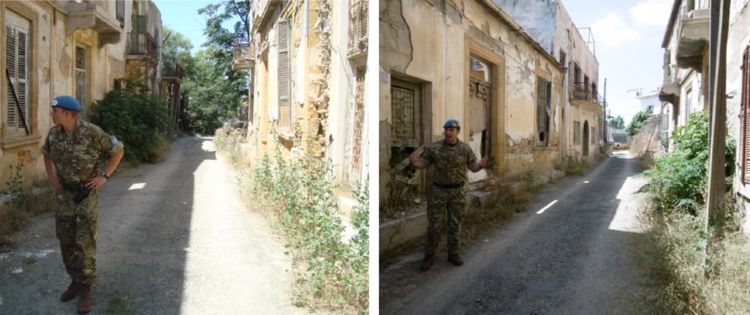
In a number of locations the width of the Buffer Zone is the width of the street................Turkish forces on the left and Greek on the right
One of these locations is known as Spear Alley........we were asked not to photograph the actual location.
It was here that a Greek soldier fixed a bayonet to a long bamboo pole and stabbed a sleeping Turkish soldier to death through the window on the opposite side of the road.
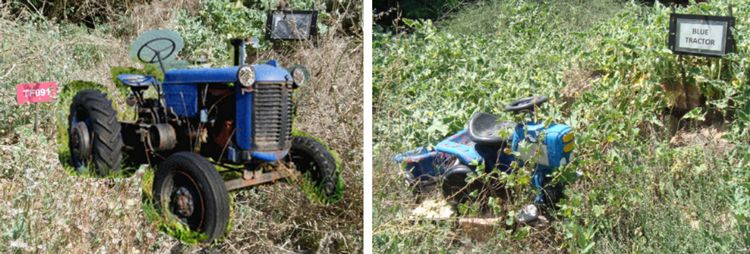
A blue tractor (not the actual tractor) marking a sector change in the Turkish lines and the 6th plastic replacement (purchased red but sprayed blue)
Each side used certain features of the Buffer Zone to demarcate different sectors. One of these landmarks was a blue tractor left behind during the fighting in 1974. After 11 years of negotiating its return, the Greek owner was allowed into the Buffer Zone for 24 hours to recover his property. He had to be alone, he couldn't use any other vehicle and the tractor had to be driven out. After 16 hours of work, the tractor was started and driven out to the Greek side. The UN had to replace the blue tractor which they did with a plastic one purchased from a local toyshop.

Many buildings are now in a dangerous state of repair and signs warn the unwary to keep well away when patrolling
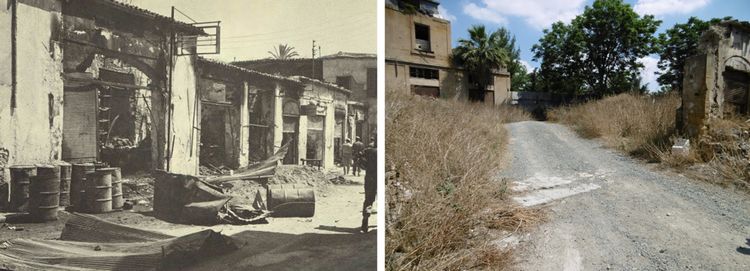
Following the events of 1974 the buildings in this section of the Buffer Zone were considered to be so dangerous that they were eventually demolished by the UN
This action proved difficult to achieve as both the Greek & Turkish sides thought that some advantage would be gained by the other if the demolition went ahead. It was finally an 'unfortunate accident' that resolved the matter. The driver of an armoured UN bulldozer experienced some steering problems and only managed to regain control when he had cleared both sides of the road.
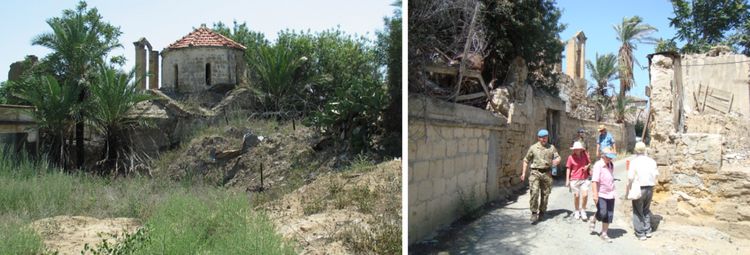
The church of St James the Persian has been isolated since the 1960s.....these deserted streets would have been used by the congregation
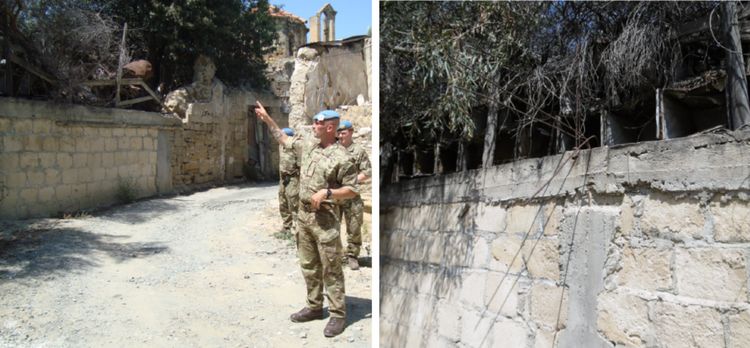
The guide indicating the 'packing case wall'
Following the collapse of an earlier wall in this location, the Turkish troops erected a wall built of plywood packing cases.
When the UN rebuilt the wall exactly as before, the Greeks and the UN realised that the Turkish packing case wall was higher.
The Greek side protested that the closed boxes could be used as observation or gun positions and demanded that they be removed.
The Turkish side refused to do this but, as a concession, agreed to turn each box round so that they could be seen as empty.
Unfortunately, no time scale was specified and over the next few years a single box was turned around each month.
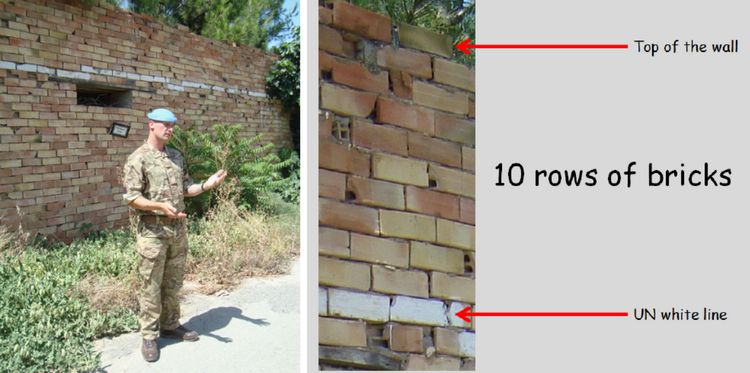
The '10 brick wall' is a good example of one side trying to gain a small advantage over the other
One important role of the UN is to maintain the 'status quo' within the Buffer Zone. It was noticed by UN patrols that, each night, this wall grew a little higher as an extra row of bricks was added. After protests, the maximum height was indicated by a painted white line on the top row. It was eventually spotted that the wall continued to grow in height but that the white row was still at the top. It transpired that, at night, the top row of bricks was being removed and an extra row added before the UN painted bricks were replaced back on the top. To thwart this practice, the UN repainted the white line ten rows of bricks from the top thus making their removal impracticable. Passing patrols then simply checked that there were only ten rows above the line.
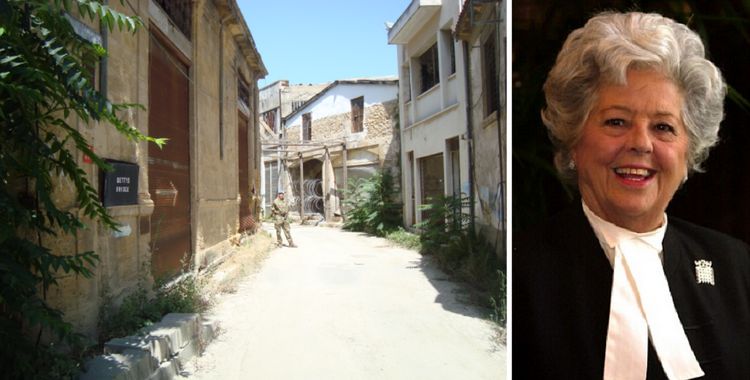
Betty's Bridge......constructed to facilitate a visit by the Speaker of the House of Commons, Betty Boothroyd
This location the Buffer Zone is at a low point in Nicosia and an area that frequently floods. The concrete blocks (seen in the lower left corner of the picture) were placed to create a bridge over the flooded section.

The Grizzly Bunker and the vehicle responsible for the name
The UN have the difficult task of maintaining the status quo within the Buffer Zone and it can be very difficult to negotiate the removal of any infringements. This particular Turkish bunker was built too far into the Zone and its removal was demanded by the Greek side. The Turkish commander was very reluctant to do this as he would be seen to be "losing face". The UN proposed a solution whereby a larger than usual UN patrol vehicle would pass by and 'accidently' demolish the offending part of the bunker. The vehicle in question was a Grizzly 6x6 Armoured Personnel Carrier.

Hermes Street (Odos Ermou) has been described as the Regent Street of old Nicosia
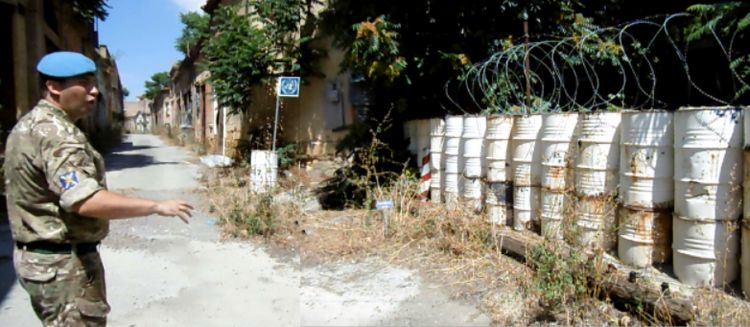
The start point of the "four minute walk"
The moves to reduce tension along the line have enabled the UN to shorten its patrol route. At this point, the patrol had to leave the main road and pass through very narrow alleyways which was only possible on foot. The patrol would have to dismount from their vehicle and meet it further down the street. It took the walking patrol four minutes to return to their vehicle.
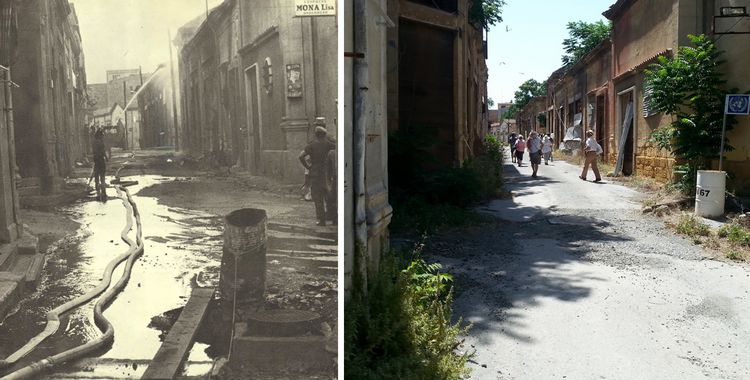
A "Then & Now" image showing Hermes Street in 1974 and 2014
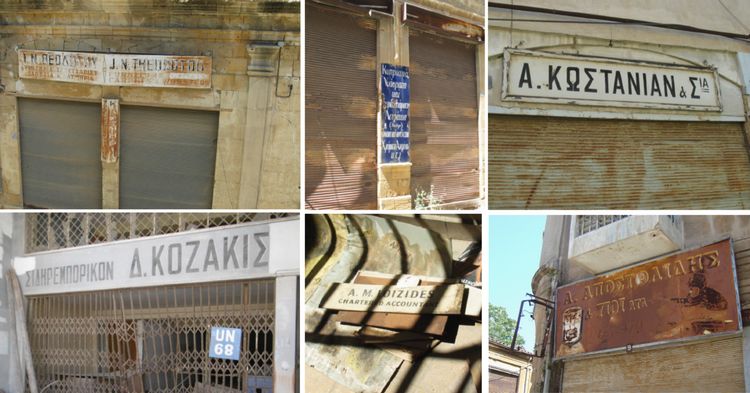
The street has many fading reminders of its busy commerical past..........
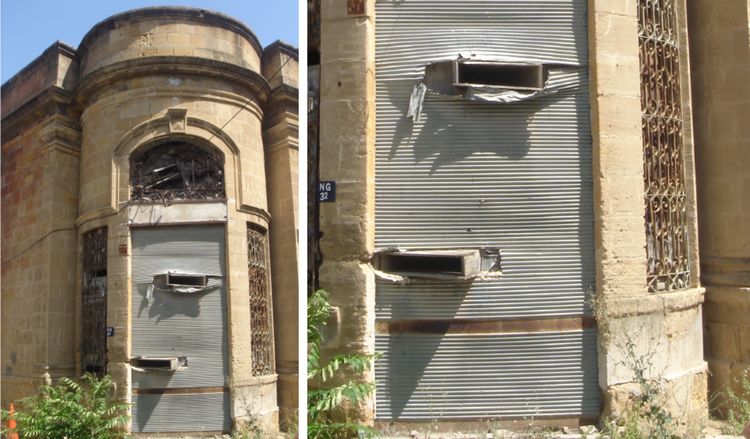
........and evidence of how even the shutters of a closed business were converted into firing positions
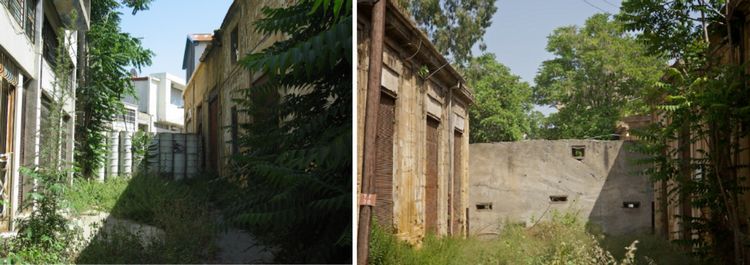
All entrances/exits to & from the Buffer Zone into the Greek south and Turkish north are sealed with steel, concrete and barbed wire
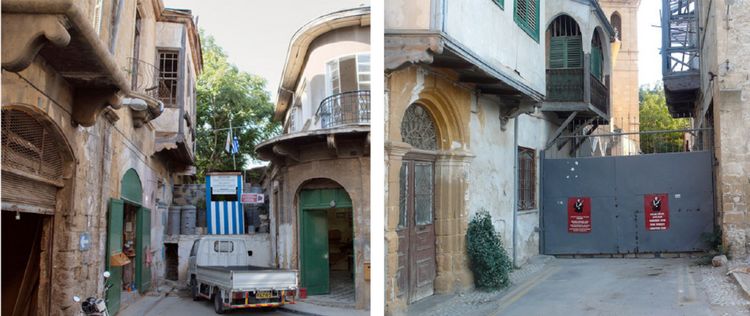
In the streets outside the Buffer Zone (both north and south) passers by can only wonder what lies beyond the guard posts and gates

At the end of Hermes Street are two sets of gates that prevent the public from entering or viewing the Buffer Zone
This is one of the more surreal experiences. With the unlocking of two sets of gates and a walk of a few metres, you are transported out from the turmoil of 1974 into the present day.
The modern, bustling Ledra Street is there to view......clothing stores, newsagents, souvenir shops, fast food outlets and coffee bars.
Pedestrianised Ledra Street is one of the crossing points between Greek and Turkish Cyprus and is busy with shoppers, tourists and a number of cross border workers.
To view the second part of the tour either click this link or use the menu on the left.